How to Use Cornell Notes
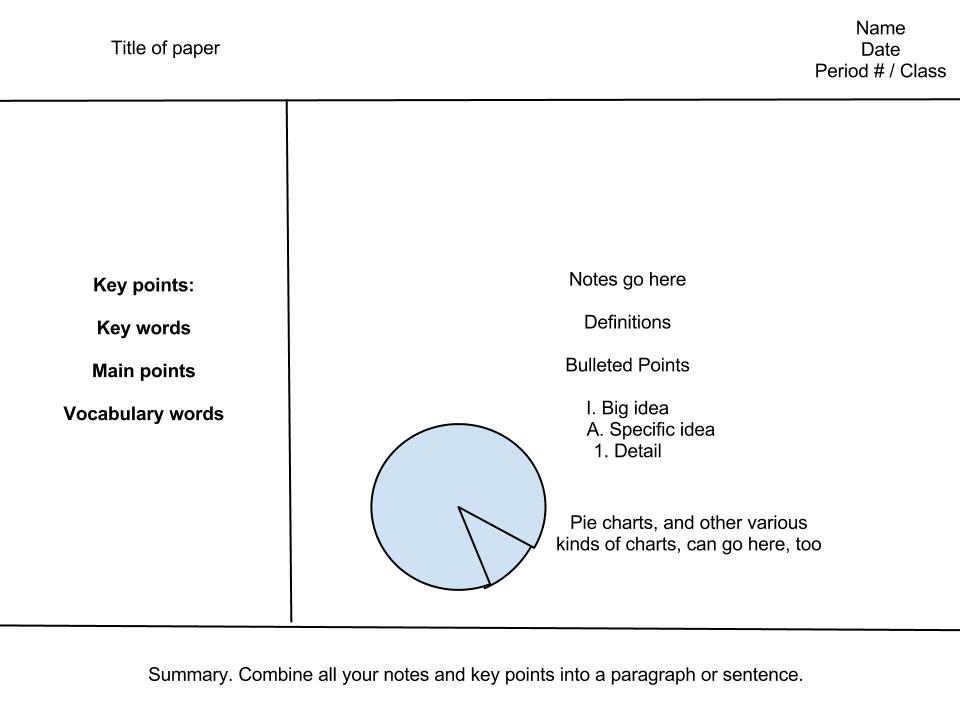.jpg)
Cornell Notes are an effective way to take notes and process what you have learned. Studies show that Cornell Notes are the best way to synthesize and apply what you need to know.
The Cornell Notes Format was created in the 1950s by Walter Pauk, who was, of course, a professor at Cornell. The system provides and orderly format for taking and summarizing notes in class. The system, at it's most basic, has 2 columns and 3 rows which create 4 sections, with a specific guide for what goes in each.
The Cornell Notes Format was created in the 1950s by Walter Pauk, who was, of course, a professor at Cornell. The system provides and orderly format for taking and summarizing notes in class. The system, at it's most basic, has 2 columns and 3 rows which create 4 sections, with a specific guide for what goes in each.
The Format
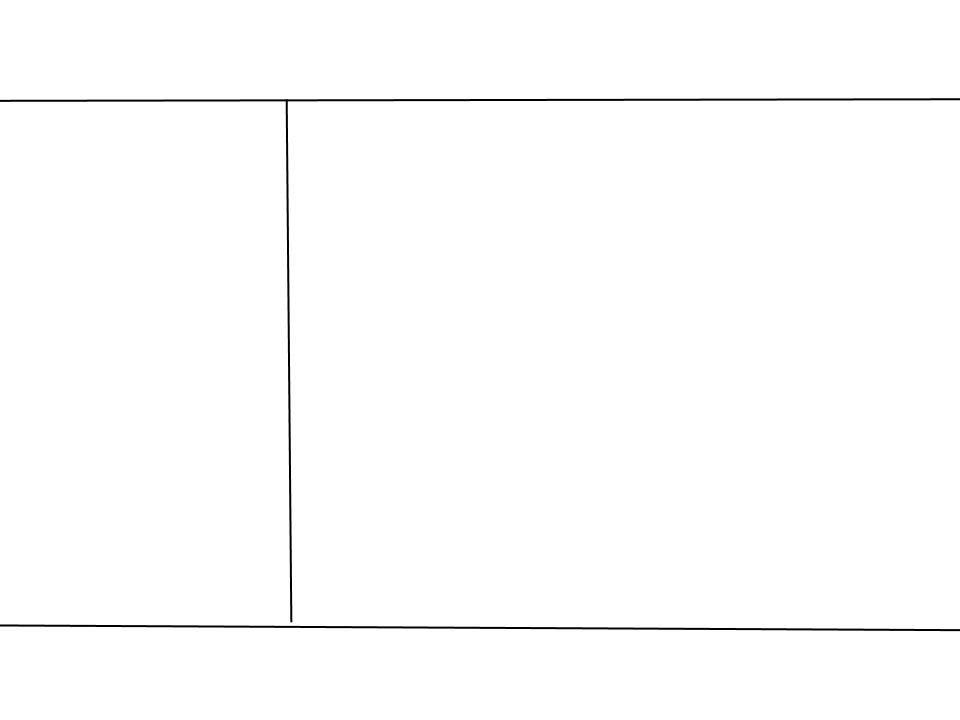
The format for Cornell Notes is quite simple. There are 2 columns, and 3 rows. The 2 columns lie inside the middle row, while the top and bottom rows are undivided.
To start, orient your paper vertically, and fold the side with holes (If you are using notebook paper) 1/3 of the way over to the right. Now, with a pen, start where the horizontal lines are, and draw along the fold. However, DO NOT draw all the way to the bottom. Leave 3 or 4 lines at the bottom (about 2 inches). now, draw 2 horizontal lines, one where the horizontal lines start, near the top, and one where your vertical line stopped, also along the horizontal lines. You know have your 4 sections.
To start, orient your paper vertically, and fold the side with holes (If you are using notebook paper) 1/3 of the way over to the right. Now, with a pen, start where the horizontal lines are, and draw along the fold. However, DO NOT draw all the way to the bottom. Leave 3 or 4 lines at the bottom (about 2 inches). now, draw 2 horizontal lines, one where the horizontal lines start, near the top, and one where your vertical line stopped, also along the horizontal lines. You know have your 4 sections.
Name and Title
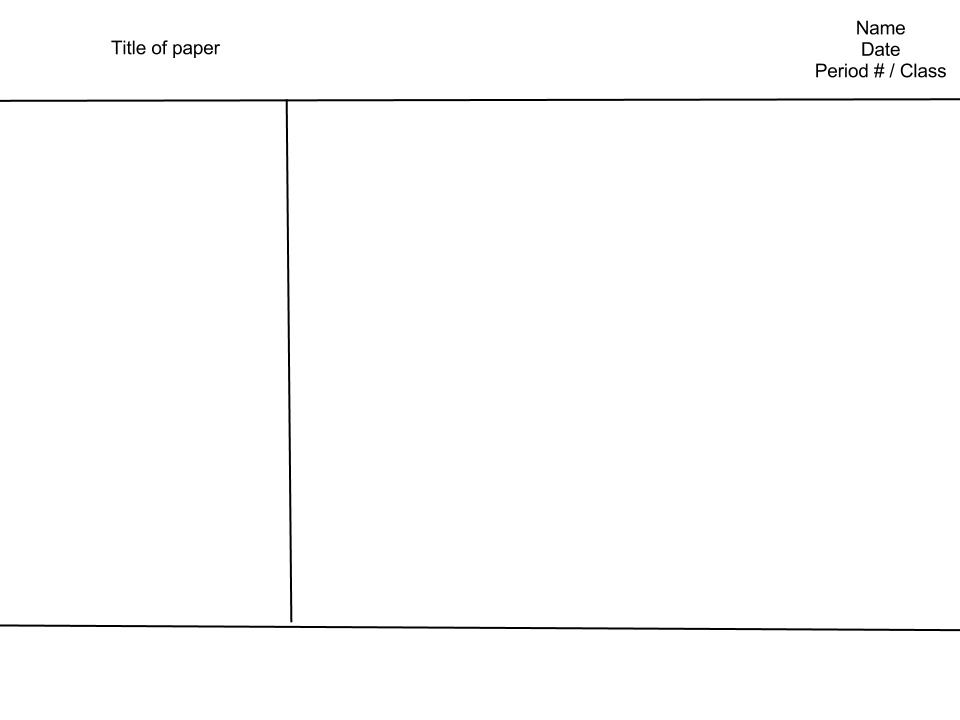
Start by writing your name in the upper-right hand corner of the upper row (section 1). Below this, write the date, and below this, the period # or class name.
Now, write the title of the paper/lecture/book lesson/whatever you are taking notes from in the upper row, over by the left side.
Now, write the title of the paper/lecture/book lesson/whatever you are taking notes from in the upper row, over by the left side.
What Goes Where
.jpg)
Now you are almost ready to start taking notes in your new format, but you still need to know what goes where.
In section 2, you put the main points. This can include, but is not limited to: Key points, key words, and vocabulary words. I stress the 'words' part because you don't put the definition in this section. Basically, in this section, you summarize each individual note that you took into its main point. You can also put questions that you have about the note. These should be answered in the note-taking section.
In section 3, you put the actual notes. this can include bulleted points, definitions, roman numeral-type notes, and various kinds of charts. This is all the information that you will have to know.
In section 4, you put your overall summary. This should be anywhere from a few sentences for a paragraph long, if you can fit it in. In section 2, you summarized each individual note into its main point. Here, you summarize everything, notes and key points, into several big ideas that relate to each other.. This helps you understand all the information that you were told.
In section 2, you put the main points. This can include, but is not limited to: Key points, key words, and vocabulary words. I stress the 'words' part because you don't put the definition in this section. Basically, in this section, you summarize each individual note that you took into its main point. You can also put questions that you have about the note. These should be answered in the note-taking section.
In section 3, you put the actual notes. this can include bulleted points, definitions, roman numeral-type notes, and various kinds of charts. This is all the information that you will have to know.
In section 4, you put your overall summary. This should be anywhere from a few sentences for a paragraph long, if you can fit it in. In section 2, you summarized each individual note into its main point. Here, you summarize everything, notes and key points, into several big ideas that relate to each other.. This helps you understand all the information that you were told.
When Each Is Used

Before you go and take notes (I can tell you're really eager to), you have to know a few more things. You have to know when to use each section.
Section 1 comes first. I know, big shock. First put your name, date, class, and title of the paper on the paper. I don't know a teacher that hasn't stressed putting your name on a paper.
Section 2 and 3 are used at the same time. Depending on the order that each is given, you either put down the key point or the note first. Then, add the other, and vise versa.
Section 4 comes last. Do not start writing in this section until the class/lecture is over. Then, you can summarize all the information into this section.
Section 1 comes first. I know, big shock. First put your name, date, class, and title of the paper on the paper. I don't know a teacher that hasn't stressed putting your name on a paper.
Section 2 and 3 are used at the same time. Depending on the order that each is given, you either put down the key point or the note first. Then, add the other, and vise versa.
Section 4 comes last. Do not start writing in this section until the class/lecture is over. Then, you can summarize all the information into this section.
How to Use
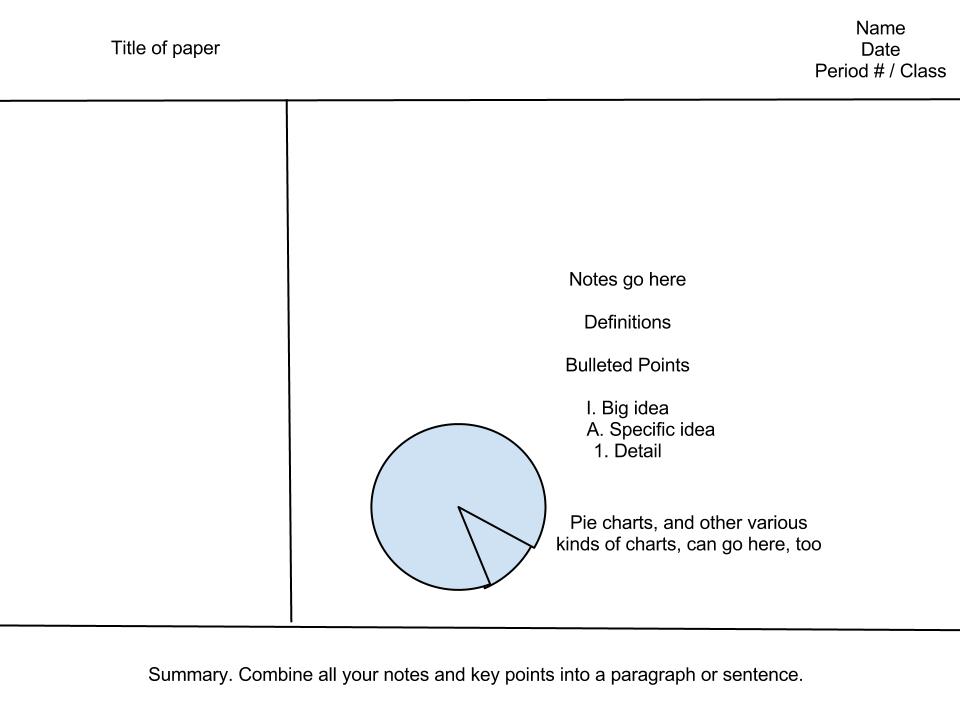

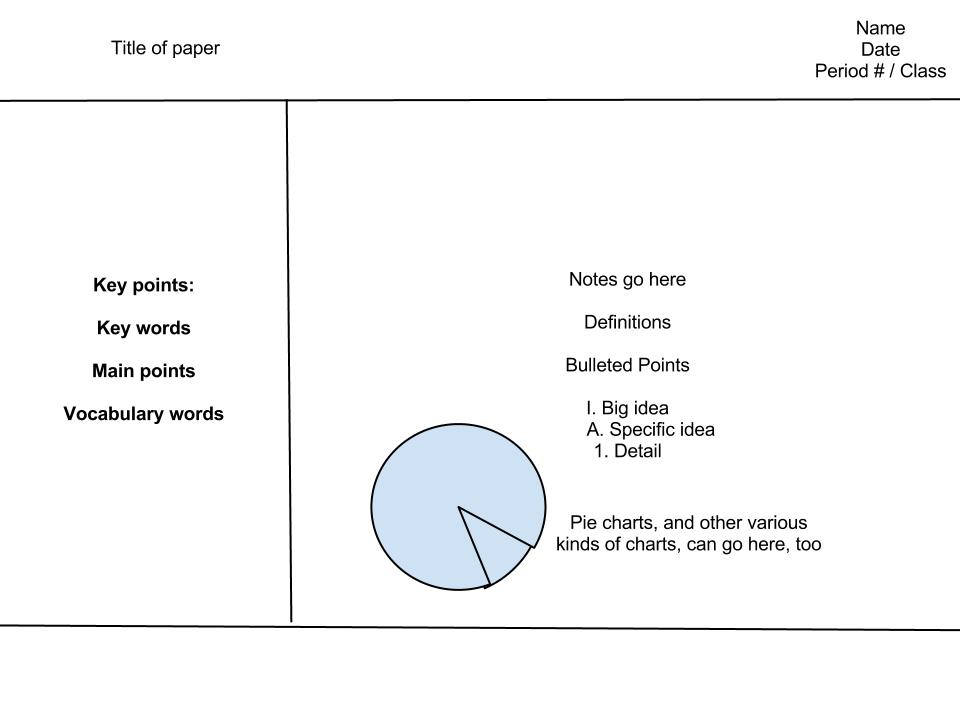
So, let's pretend that you have gone to lecture, taken great notes, and summarized everything. Now what?
Now, you practice. take a sheet of paper (blank works fine), and cover either section 2 or 3. Now using only the information in the uncovered column, you must either expand or summarize the information in the uncovered column into the information in the covered column. Do this again and again, until you can confidently explain each concept. When you do this, try and use your own words, instead of doing it mechanically. This helps you improve recall and understanding.
Also, cover section 4 (the summary), and using only the information in sections two and three, summarize the information into a summary. The summary that you just created doesn't have to be identical. In fact, if you can come up with another part for the summary, add it.
Now, you practice. take a sheet of paper (blank works fine), and cover either section 2 or 3. Now using only the information in the uncovered column, you must either expand or summarize the information in the uncovered column into the information in the covered column. Do this again and again, until you can confidently explain each concept. When you do this, try and use your own words, instead of doing it mechanically. This helps you improve recall and understanding.
Also, cover section 4 (the summary), and using only the information in sections two and three, summarize the information into a summary. The summary that you just created doesn't have to be identical. In fact, if you can come up with another part for the summary, add it.
Download
I have provided a PDF download template for the Cornell Notes System. The dimensions are not exactly what was specified in Step 2: The Format, but it still should work.